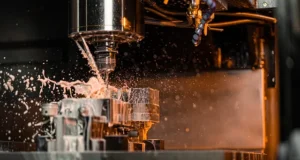When it comes to replacing hydraulic hoses, there are a few things to consider first. One of these things is whether the hose is still functional or not. If it is still functioning, consider replacing the hose for several reasons. These include exposed wire, surface damage, and chemical compatibility issues. In addition, there are kinks and corrosion that you should also be aware of.
Exposed wire and surface damage
When considering hydraulic hose replacement Charlotte NC, you must know a few common reasons for failure. Hydraulic hoses are built to endure tremendous pressure, and failure can result in significant property damage, higher material and labor expenses, and unplanned downtime. In addition, a few factors can contribute to this failure, including improper routing and assembly procedures.
Abrasion is one of the most prevalent reasons for hydraulic hose failure. Over time, bruises can lead to cuts and other abrasion-related damage. To prevent this, abrasion sleeves should be used on any hoses that rub against other equipment or abrasive surfaces.
Hydraulic hoses must be maintained appropriately despite their low cost to avoid damage. In addition, hoses need to be used at subfreezing temperatures, as the rubber and plastic coatings will dry.
Re-ending damaged hoses
Hydraulic hoses are crucial to the proper operation of hydraulic systems. However, these hoses may experience a variety of failures over their lifetimes. It could mean a loss of productivity and injuries to operators and the environment. Fortunately, there are several ways to fix a damaged hydraulic hose.
The first method is to cut out the damaged part. Then you can apply a new fitting. This process is known as re-ending. However, industry experts agree that it is not the best way to go, and it is better to replace the damaged hose altogether.
Another method to repair a damaged hydraulic hose is to install a new one. If this is the case, you should ensure that the new hose is compatible with your equipment. You should also make sure that the hose is routed correctly. Poor routing can cause more stress and fatigue on your hydraulic hose.
Kinks on the hose
If you plan to replace your hydraulic hose, you must know the kinks. Kinks on the hydraulic hose can damage the hose and reduce its efficiency.
A kink on the hydraulic hose is a sharp bend on the line. It is caused by excessive pressure. The kink can cut off the hydraulic fluid supply, interrupting the process.
Kinks on the hydraulic hose may be caused by bending the hose too sharply, too far from the fitting, or by a poor routing technique. Any of these factors can cause a hose to fail.
Another cause of a hose failure is external damage to the hose’s cover or carcass. This damage can result in leakage or reduced performance.
To avoid this type of failure, it is essential to perform regular maintenance. Proper hose routing can increase the lifespan of your hose. Also, keep an eye on your hose’s best before the date.
Corrosion on the fittings
Corrosion on the fittings in the hydraulic system can be a problematic issue. Therefore, it is essential to take preventative measures and ensure that any problems are detected. In addition, it will help avoid downtime and the potential cost of damage.
The most common causes of corrosion are exposure to chemicals and environmental factors. For example, saltwater and corrosive chemicals can attack the outer cover of hoses and erode the protective coating.
In addition, heat can deteriorate a hose. Heat can be caused by internal system components and external factors like routing the hose close to a hot spot.
Rust may also build up on the hose. If this occurs, the hose will need to be replaced.
Hydraulic hoses are used in many industries. They are generally made from stainless steel or carbon steel. However, hoses have to be rated for operating pressure.
Chemical compatibility issues
When considering hydraulic hose replacement, it is essential to consider the chemical compatibility of all components. Failure can result in property damage, increased material and labor costs, and increased downtime.
To determine whether the components in your hydraulic system are chemically compatible, look at the Material Safety Data Sheets (MSDS).
Hydraulic hoses are constructed using several layers of different materials. They are also flexible to fit into tight spaces. However, they can only succeed if the components are correctly assembled. Therefore, ensure that all parts are manufactured to the specifications.
The best way to determine if the components in your hydraulic system are compatible is to check the manufacturer’s MSDS. Many manufacturers have labs where they test their hoses and couplings. In addition, they can provide you with information about the hose’s chemical resistance and expected working life.
 Blog For Noob Random thought of a Noob Blogger
Blog For Noob Random thought of a Noob Blogger









